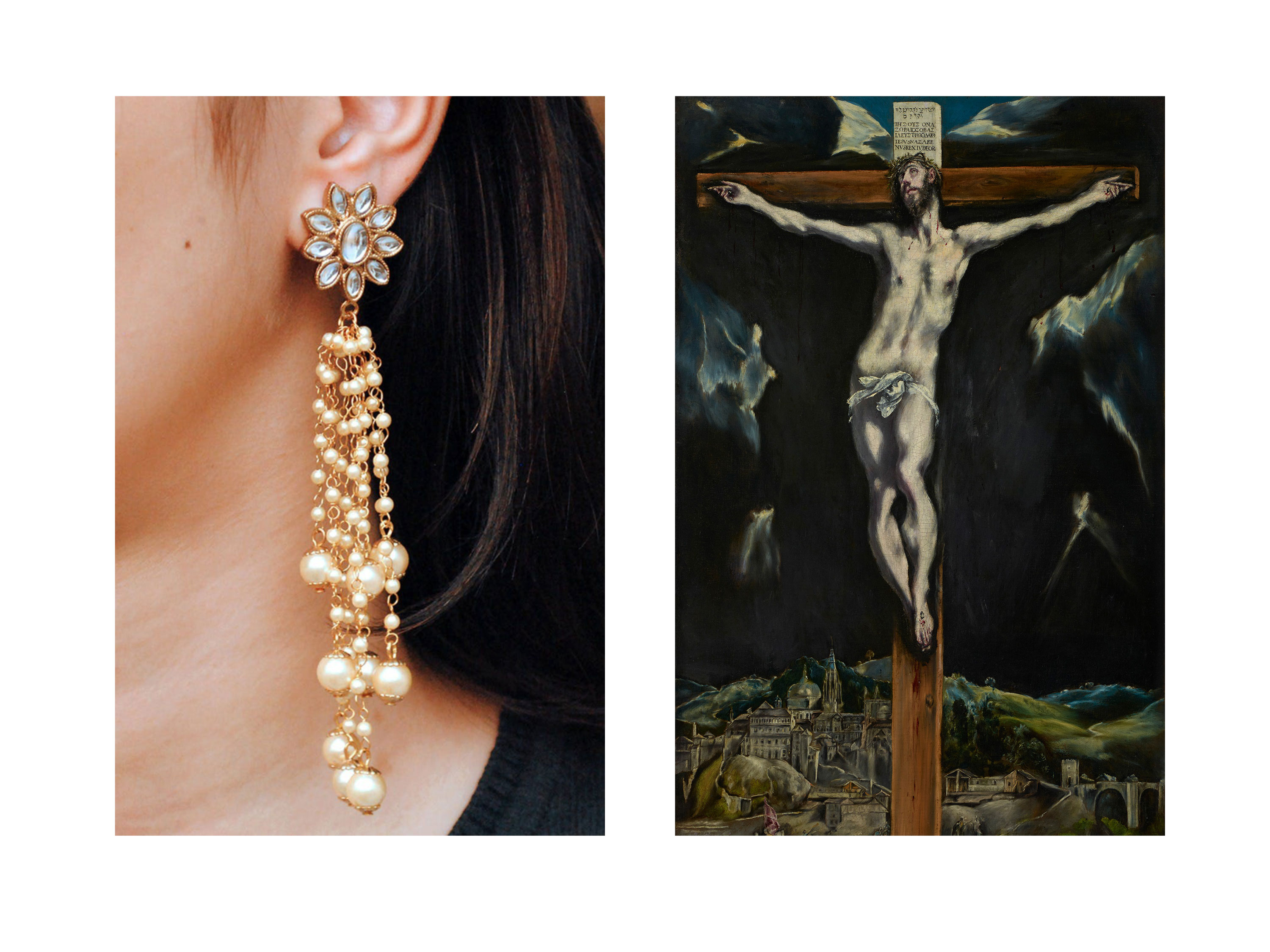
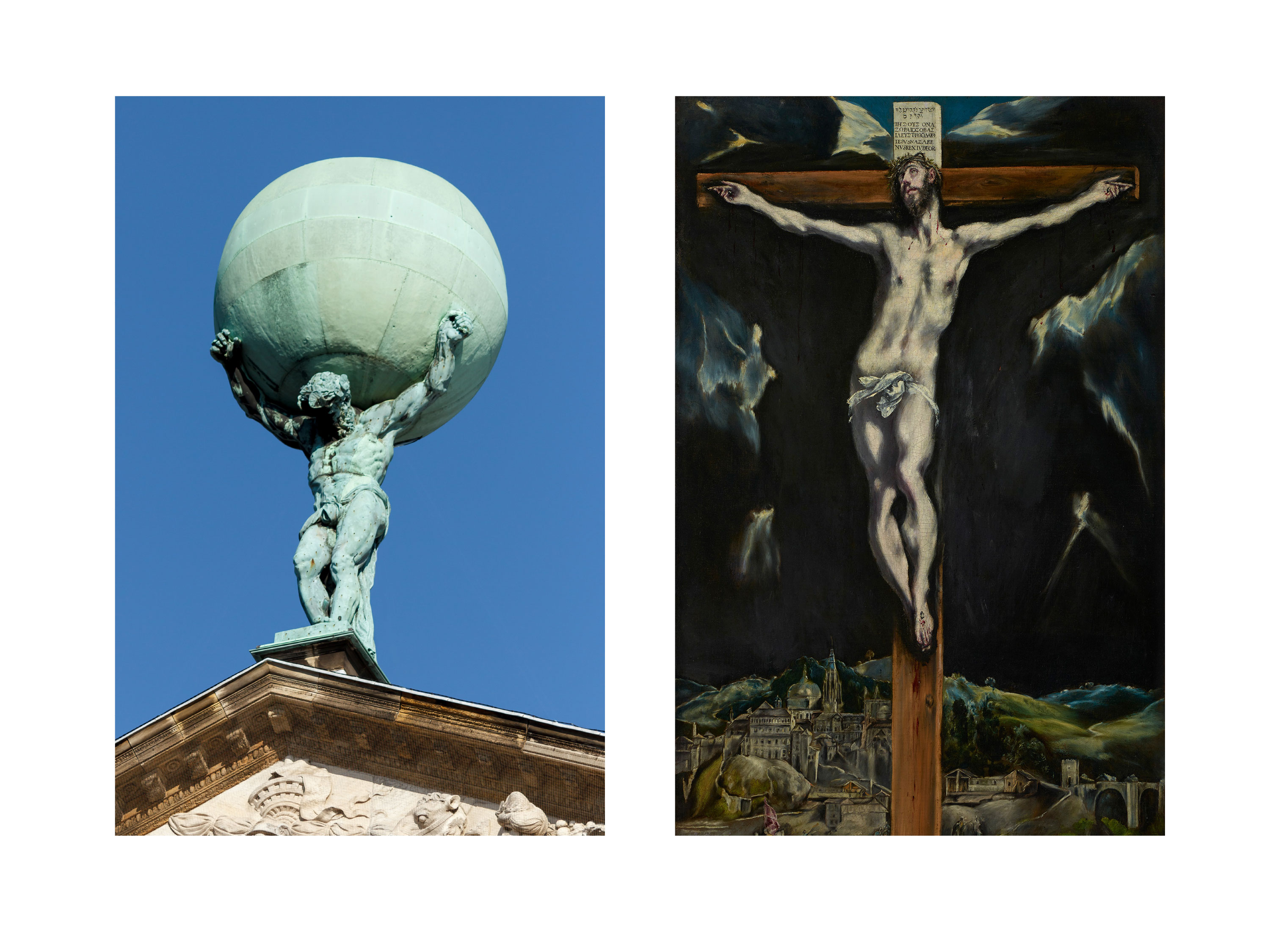
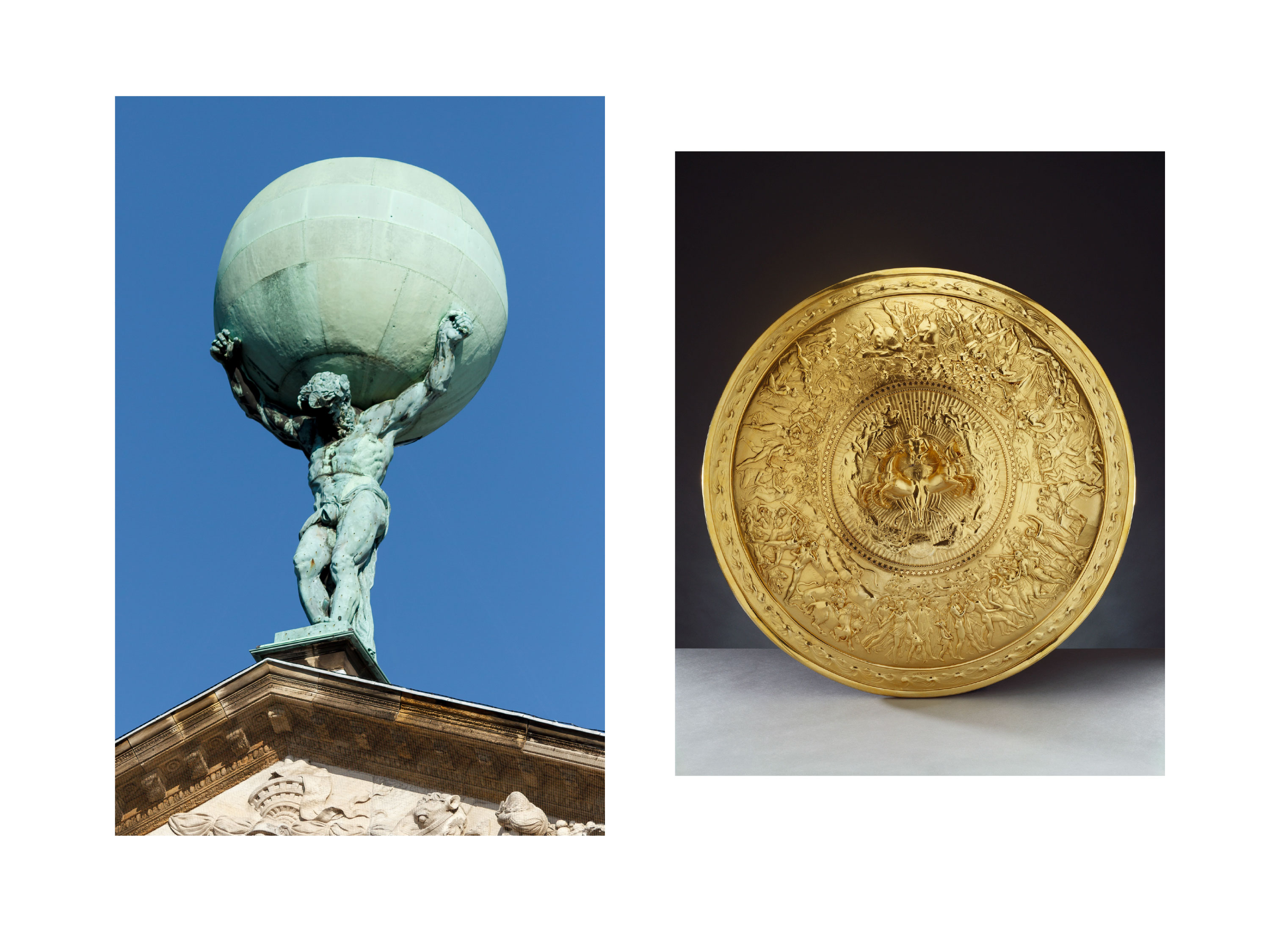
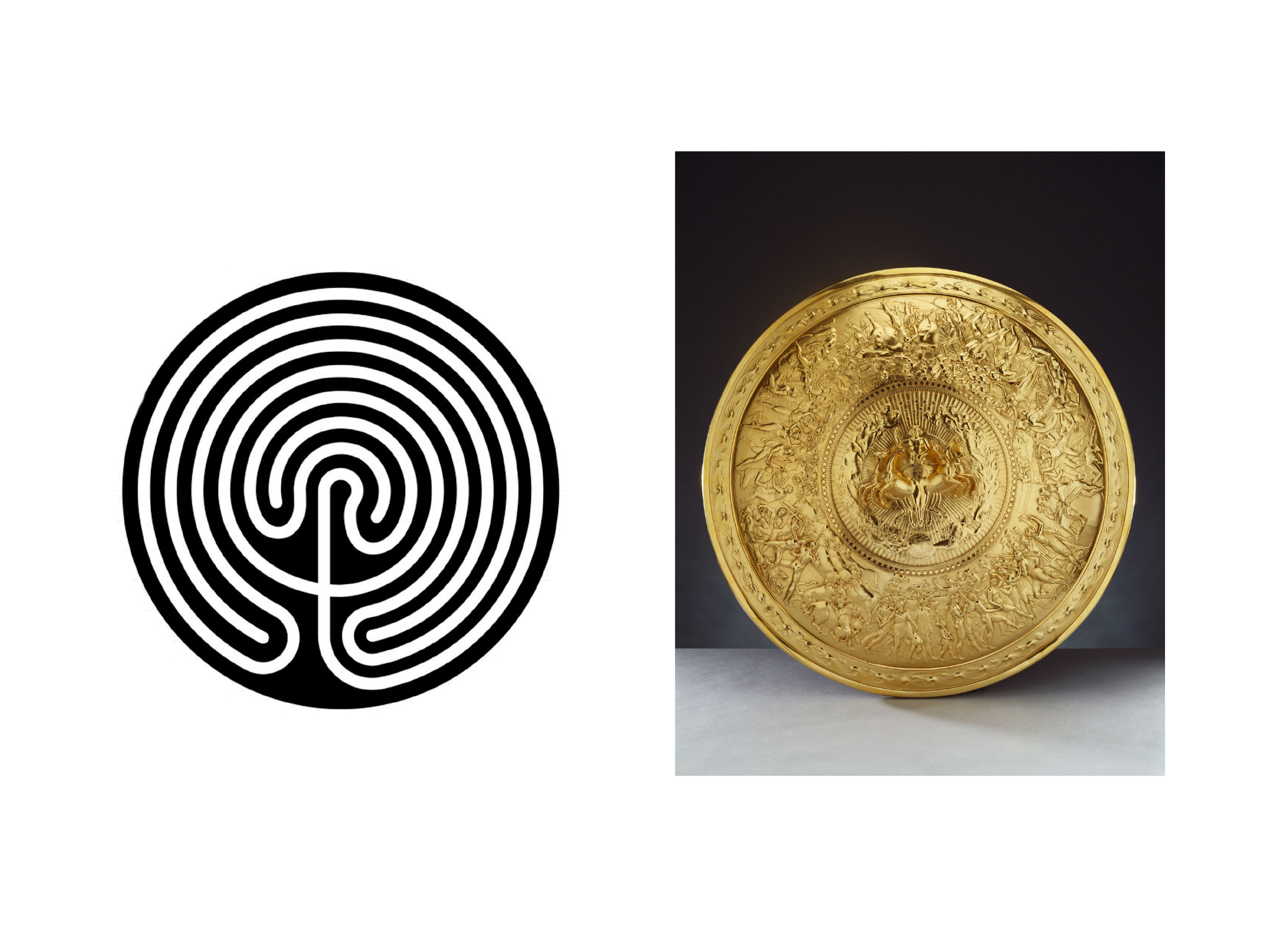
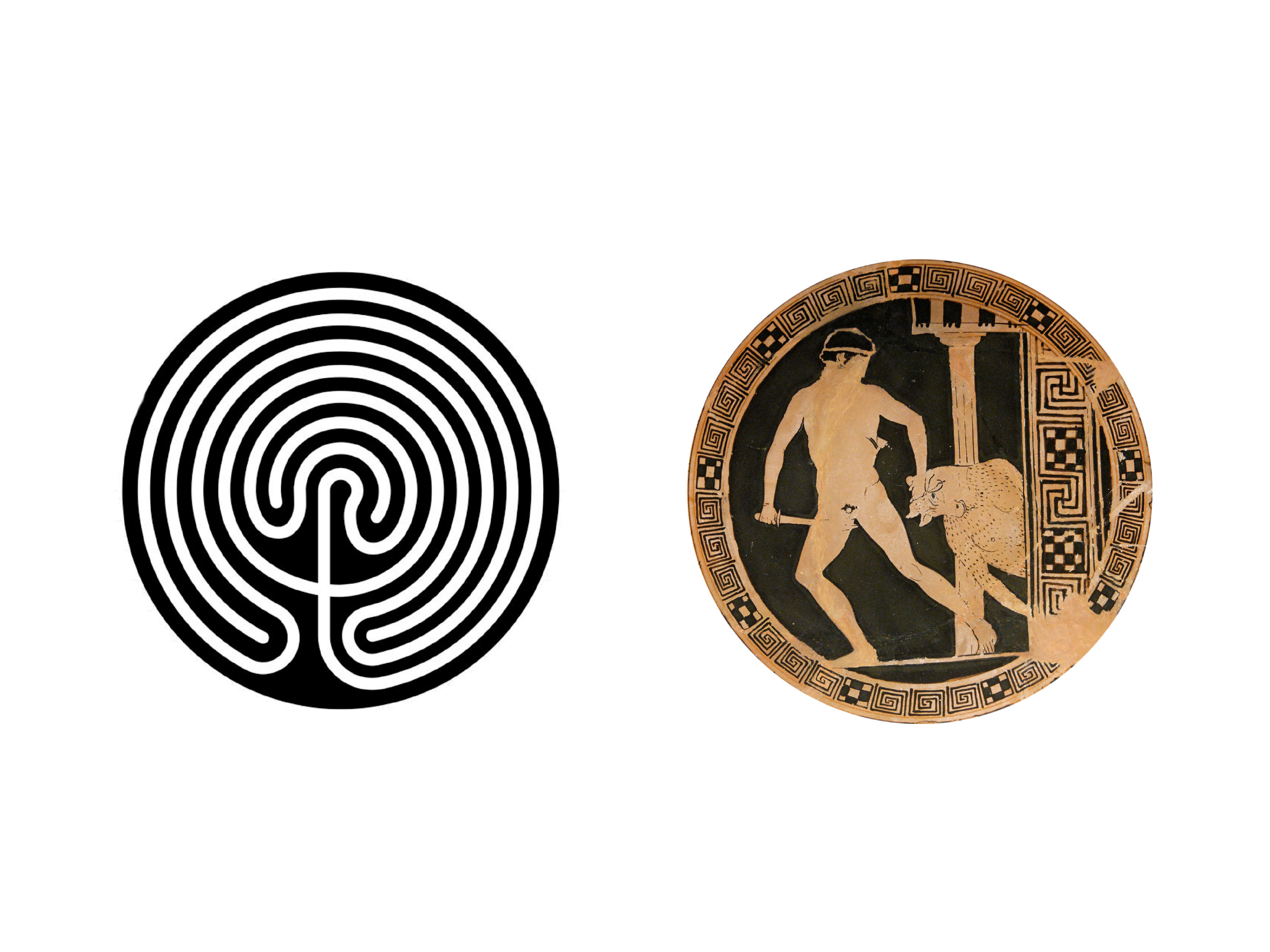
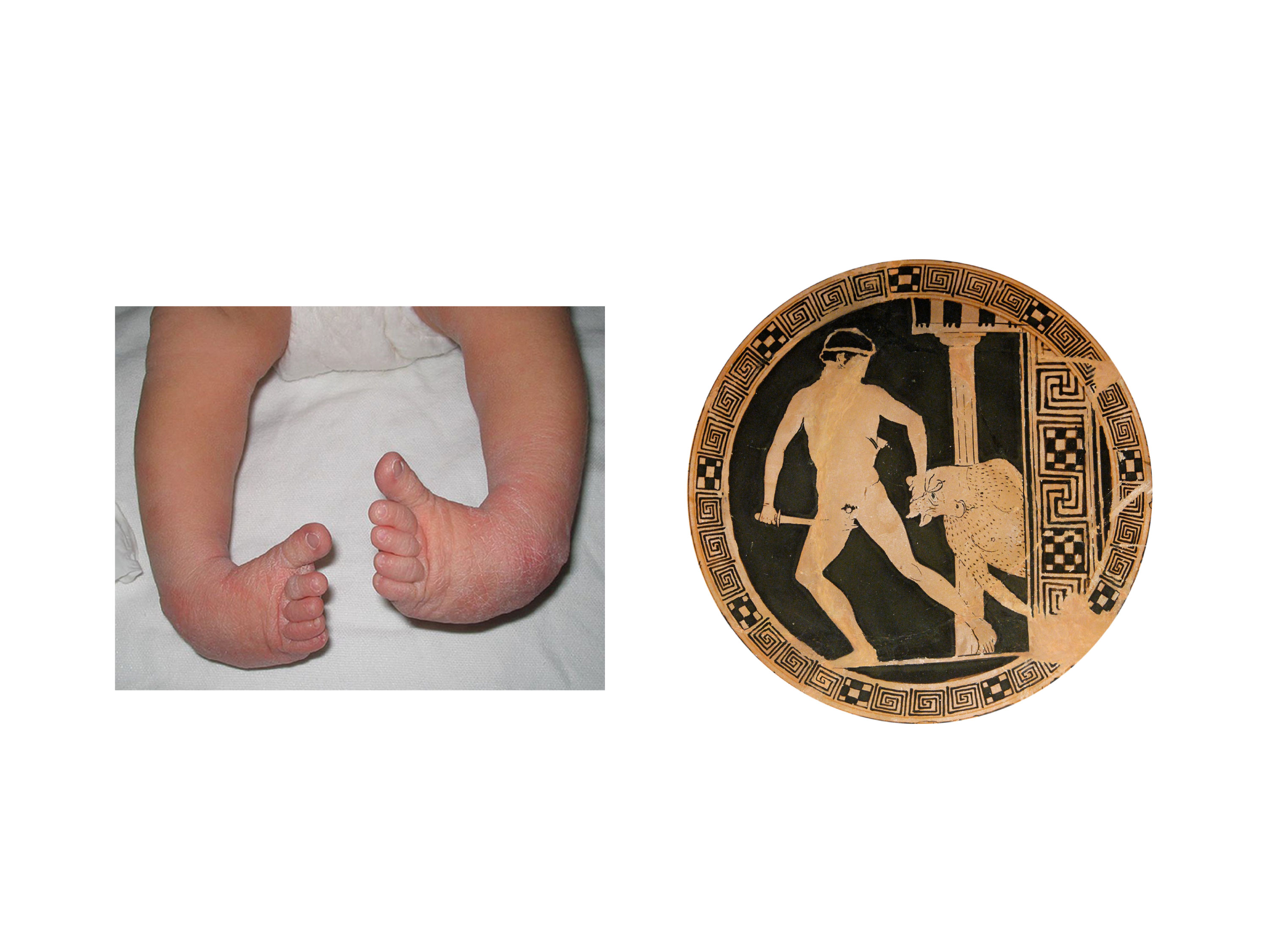
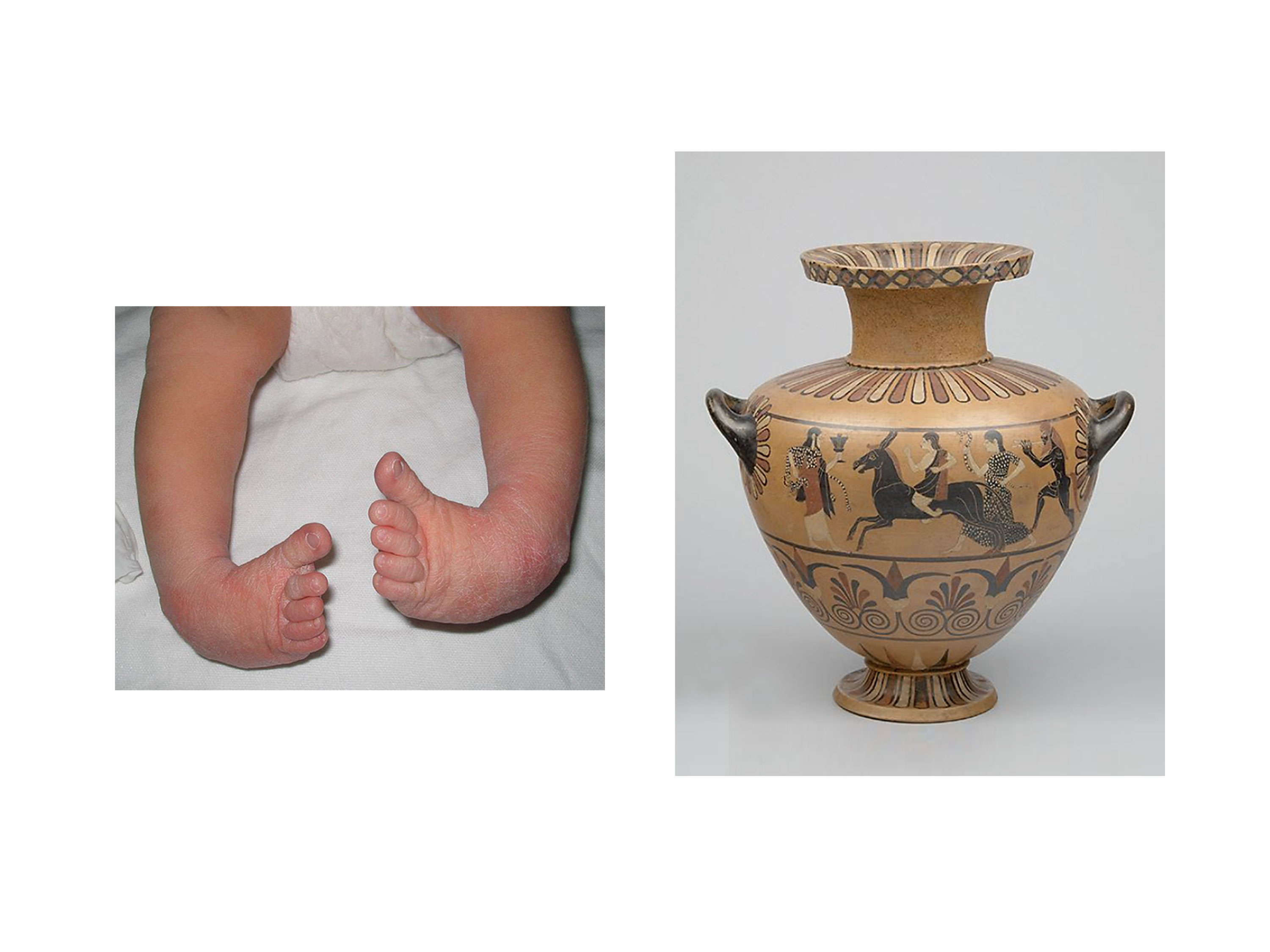
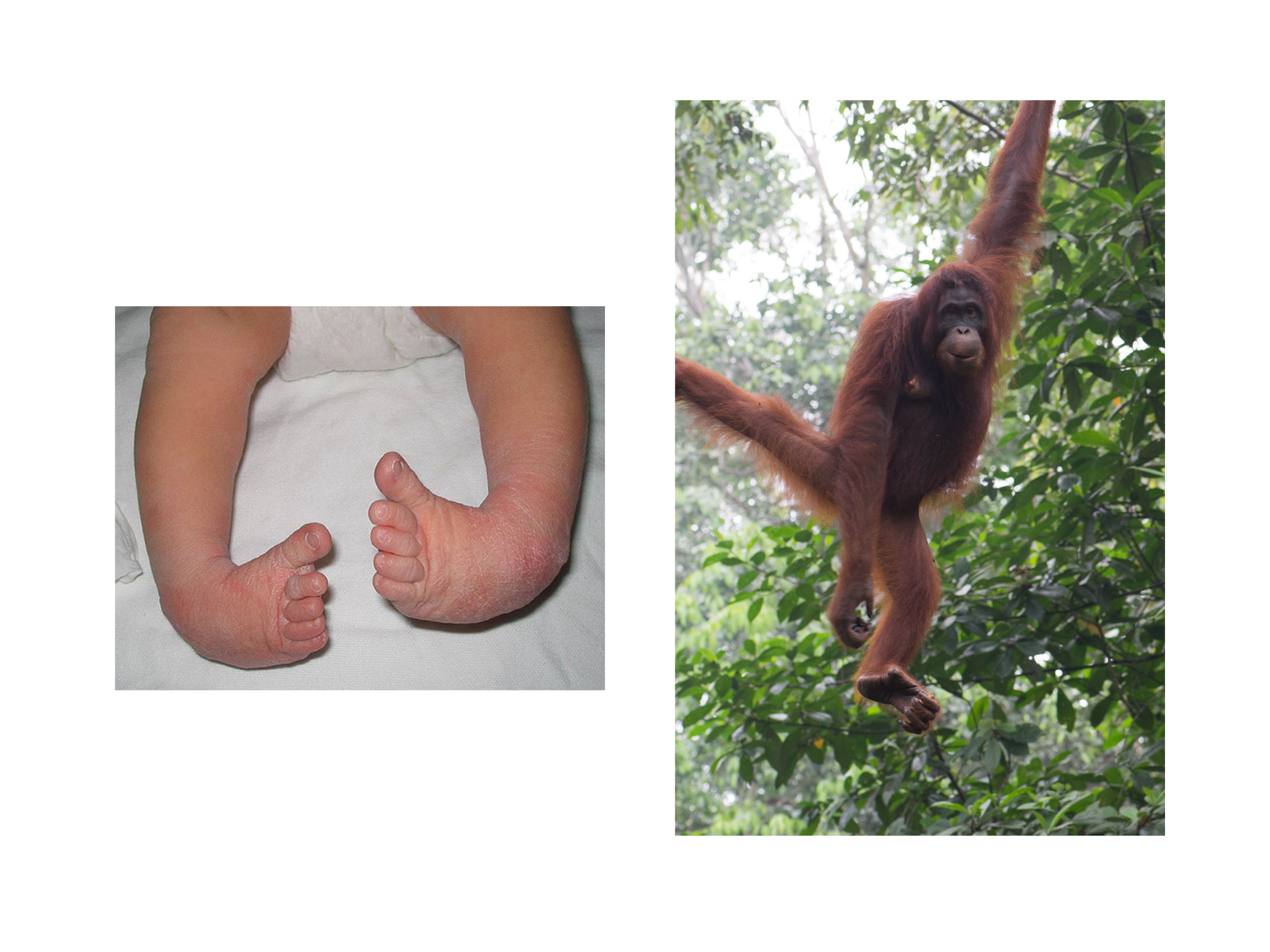




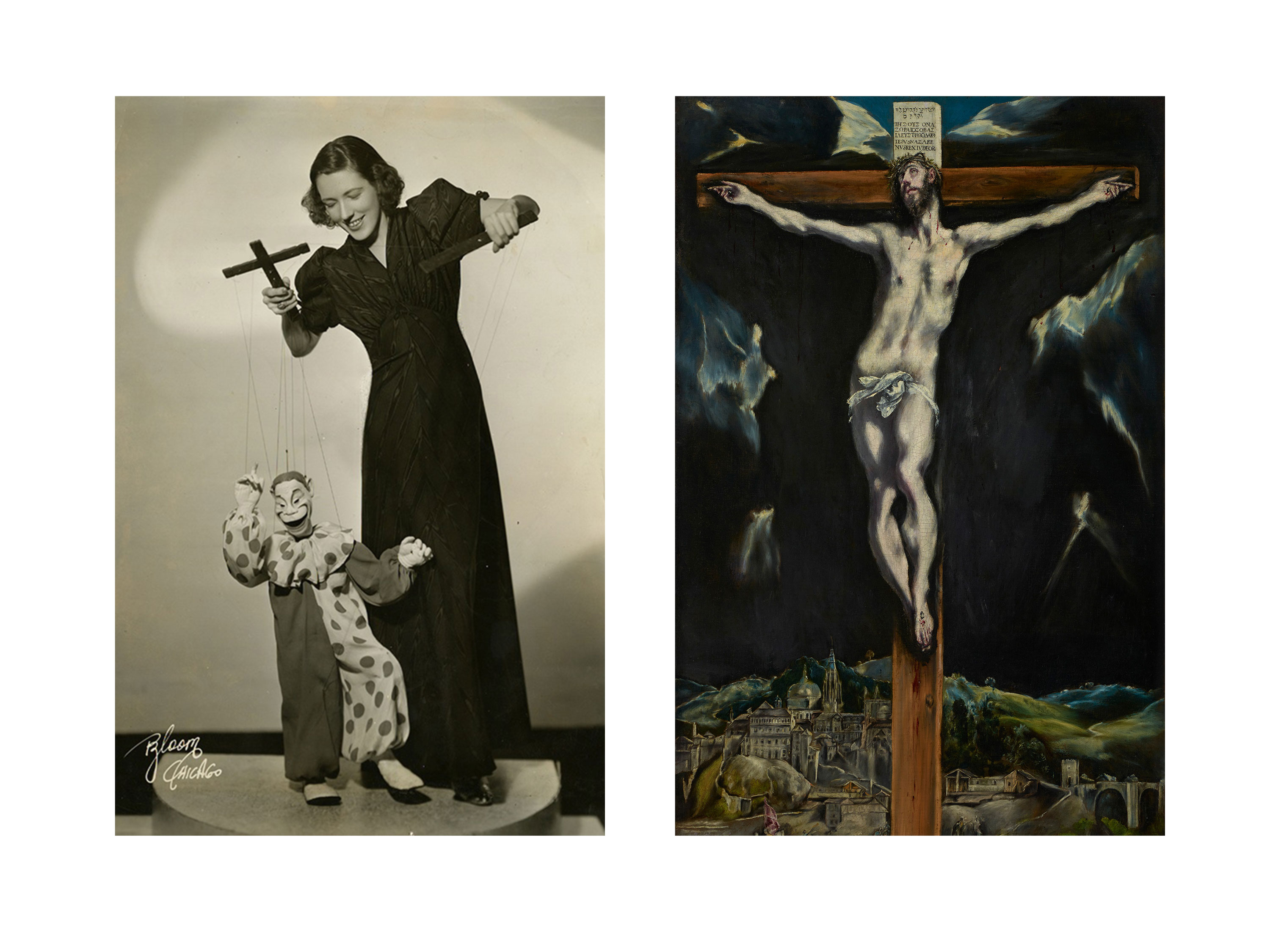
HANGING: The Sweetness of Ornament (part 1): ornament
In this lecture two figures of the Grace Machine take a central position: Aglaia—she who shines—and Hephaestus—he who makes shining things. In his dark, glowing forge the club-footed smith-god creates two forms of artifice: ornament and automata. Are these related, and if so, how? Via earlier concepts such as Simmel’s radiation and Warburg’s bewegtes Beiwerk we arrive at a notion of shining that involves movement, and vice versa. When we compare Hephaestus to his conceptual twin, Daedalus, we find that the labyrinth too was as much a motif of ornament as one of dance. And after comparing the horns of the Minotaur to those of Moses and the headgear of a shaman hidden deep in a cave in Southern France, we start to see that transfiguration involves weakness and pain. Again, the caryatids and St Sebastian, both tied to their columns, show us the ultimate hanging figure: Christ—how does the figura crucis that separates the structure of the cross from the serpentine of death find grace? At this point, Oscar Wilde leads the way to sweetness.
In this lecture two figures of the Grace Machine take a central position: Aglaia—she who shines—and Hephaestus—he who makes shining things. In his dark, glowing forge the club-footed smith-god creates two forms of artifice: ornament and automata. Are these related, and if so, how? Via earlier concepts such as Simmel’s radiation and Warburg’s bewegtes Beiwerk we arrive at a notion of shining that involves movement, and vice versa. When we compare Hephaestus to his conceptual twin, Daedalus, we find that the labyrinth too was as much a motif of ornament as one of dance. And after comparing the horns of the Minotaur to those of Moses and the headgear of a shaman hidden deep in a cave in Southern France, we start to see that transfiguration involves weakness and pain. Again, the caryatids and St Sebastian, both tied to their columns, show us the ultimate hanging figure: Christ—how does the figura crucis that separates the structure of the cross from the serpentine of death find grace? At this point, Oscar Wilde leads the way to sweetness.
HANGING: The Sweetness of Ornament (part 2): automata
In this second part of the lecture we dive deeper into the question why it is possible—from the viewpoint of the Grace Machine—to link ornament and automata. Again, via the figure of Hephaestus: why was he born with clubfeet? And why did it allow him to be married to Aglaia, who is so strongly linked to Aphrodite? Of course, he is the maker of cunning things, that is, ornate as well as self-moving things. But on a more fundamental level, his clubfeet render him dependent on prostheses: the two golden robot-maidens helping him not only to walk, but to calculate and think. Two robots, two crooked legs. Yet, beyond their prosthetic function they are deeply mimetic as well, “like real young women.” Appearances and technology work on the same plane in the Greek realm of mythology, a system of figures that presents us with nothing short of an inversed phenomenology. Then, when we start looking closely at the art of puppeteering and, in the same vein, at Kleist’s story on the theater of marionettes, we encounter unexpected notions of transcendence and how free will and grace can be aligned.
In this second part of the lecture we dive deeper into the question why it is possible—from the viewpoint of the Grace Machine—to link ornament and automata. Again, via the figure of Hephaestus: why was he born with clubfeet? And why did it allow him to be married to Aglaia, who is so strongly linked to Aphrodite? Of course, he is the maker of cunning things, that is, ornate as well as self-moving things. But on a more fundamental level, his clubfeet render him dependent on prostheses: the two golden robot-maidens helping him not only to walk, but to calculate and think. Two robots, two crooked legs. Yet, beyond their prosthetic function they are deeply mimetic as well, “like real young women.” Appearances and technology work on the same plane in the Greek realm of mythology, a system of figures that presents us with nothing short of an inversed phenomenology. Then, when we start looking closely at the art of puppeteering and, in the same vein, at Kleist’s story on the theater of marionettes, we encounter unexpected notions of transcendence and how free will and grace can be aligned.
